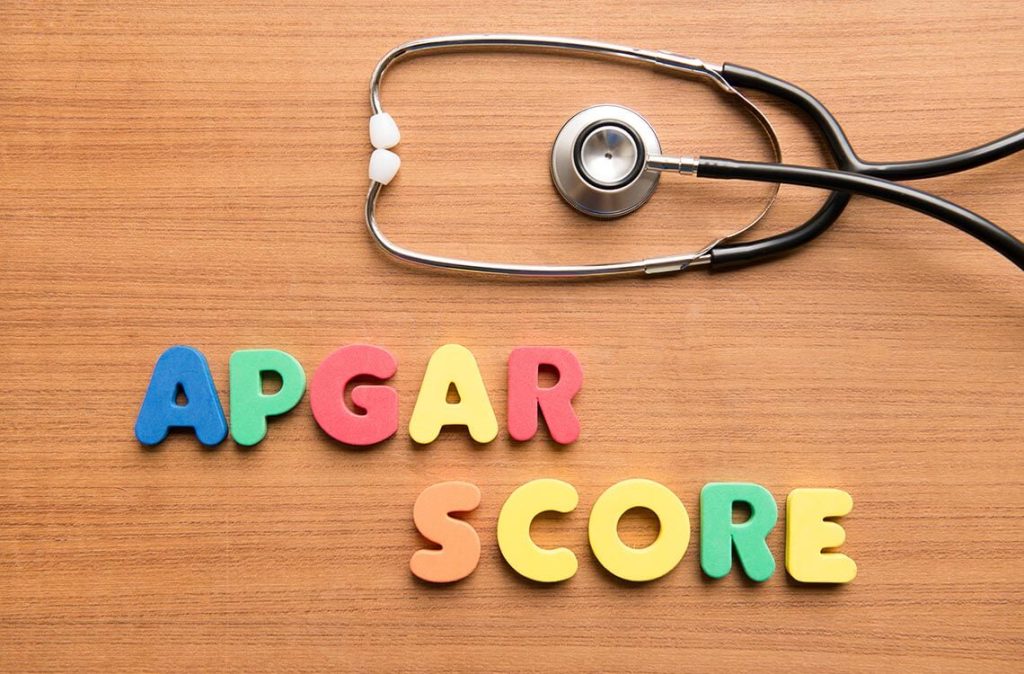While not a medical practice that is commonly known among laymen, the Apgar score is one of the only approved methods of calculating newborn health within the first few minutes of the baby’s life. You may even hear your doctor mention it during a regular check-up of your baby. If you’re wondering what it means, the following information may help quench your curiosity.
What the Apgar Score Is Used For
According to Dr. Ravichandran Jeganathan, Head of Obstetrics and Gynaecology at Hospital Sultanah Aminah, Johor Bahru, the Apgar scoring is the most consistently used measure of neonatal health in the few minutes after delivery. It provides labour ward staff with a shared understanding of a newborn’s status, and the possible need for and response to resuscitation.
The metrics involve the assessment of five characteristics: Appearance, Pulse, Grimace, Activity, and Respiration (APGAR). The Apgar scoring was first conceived by anaestheologist Dr. Virginia Apgar in 1952. It was later approved by the by both the American College of Obstetricians and Gynecologists (ACOG) and the American Academy of Pediatrics (AAP).
Just as it was first used decades ago, the Apgar scoring determines if a baby requires resuscitation if they receive a score under 7. However, the Apgar process is often postponed if the newborn requires immediate emergency resuscitation.
In Malaysia, just like in most countries that uses the Apgar scoring system, a baby is assessed within the first 1, 5 and 10 minutes of life. The following represents the scoring metrics that doctors, nurses, and midwives when using the Apgar system.
How the Apgar Scoring Works
Appearance (or Colour)
- pale or blue (score is 0)
- pink, but the extremities are blue (score is 1)
- entirely pink (score is 2)
*Note, most infants will score 1 for colour as peripheral cyanosis is common among normal infants. Colour can also be misleading in non-Caucasian infants.
Pulse (or Heart Rate)
- no heartbeat (score is 0)
- heart rate is less than 100 beats per minute (score is 1)
- heart rate is more than 100 beats per minute, the heart rate score is 2
*Note, heart rate is evaluated with a stethoscope. It is the most critical part of the score in determining the need for resuscitation.
Grimace Response (or Reflex Irritability in Response to Stimulation)
- no response to stimulation (score is 0)
- grimacing in response to stimulation (score is 1)
- infant cries, coughs, or sneezes on stimulation (score is 2)
Activity (or Muscle Tone)
- muscle tone is loose and floppy without activity (score is 0)
- infant demonstrates some tone and flexion (score is 1)
- the infant is in active motion with a flexed muscle tone that resists extension (score is 2)
Respiration (or Breathing Effort)
- infant is not breathing (score is 0)
- respirations are slow and irregular, weak or gasping (score is 1)
- infant is crying vigorously (score is 2)
While the process lists the five criteria in succession as APGAR, the practical order of assessment actually begins with Respiration followed by Pulse, Activity, Grimace and Appearance. Despite this, the scoring system is still widely known as APGAR to this day.
Your Baby’s Apgar Score and What they Mean
If you happen to see your baby’s Apgar scores you may have some questions about what they mean. We mentioned earlier that any number lower than 7 is usually a cause for concern. But the caveats of your baby’s Apgar results will be explained further in the following section.
For now, here’s what the typical Apgar scores usually mean when doctors record them:
- 7 to 10: newborn is in good to health (only routine post-delivery care is required)
- 4 to 6: newborn is in fair condition (resuscitation measures required)
- Under 4: newborn is in poor condition (immediate medical attention is required)
Limitations and Caveats of the Apgar
While the Apgar remains an initial and rapid assessment of newborn health, it is not a good predictor of long-term health outcomes. According to Dr. Leslie Simon, Emergency Medicine Physician at Mayo Clinic Florida, low Apgar results at 1 minute does not necessarily indicate that the child has a health conditions, especially if the Apgar score improves at the 5- or 10-minute marker.
Many newborns have low heart and breathing rates after delivery that stabilises once they acclimate to the extrauterine (outside the womb) environment.
Moreover, doctors still need to do a full physical examination with other tools and machines if there is anything wrong with the baby. The process is also not a good tool for diagnosing conditions like asphyxia.
Your Baby’s Health Comes First
Be that as it may, the Apgar remains one of the most useful tools to determine if a child may require resuscitative measures and respiratory aid after delivery which is why it is still used by doctors and nurses to this day. Hence, if you ever hear your baby’s doctor mention the Apgar during a check-up, just know that it’s for their general wellbeing. So don’t worry, your baby is in good hands.
Disclaimer: The information provided in this article is for informational purposes only and should not be considered as medical advice from Motherhood. For any health-related concerns, it is advisable to consult with a qualified healthcare professional or medical practitioner.
For more insightful stories and fun recipes, stay tuned to Motherhood Story!
